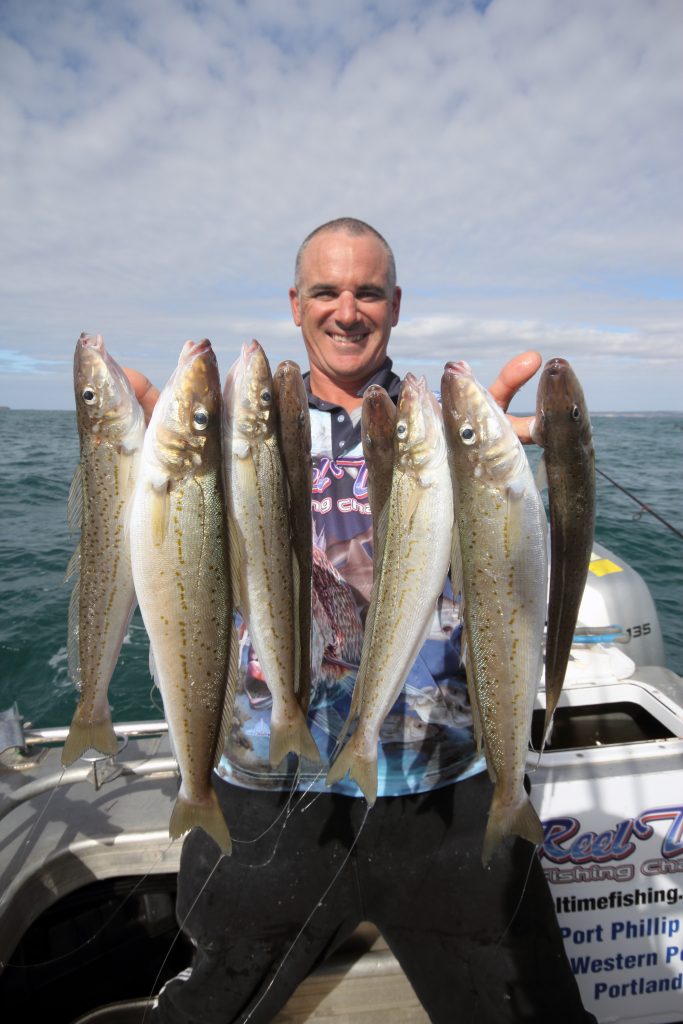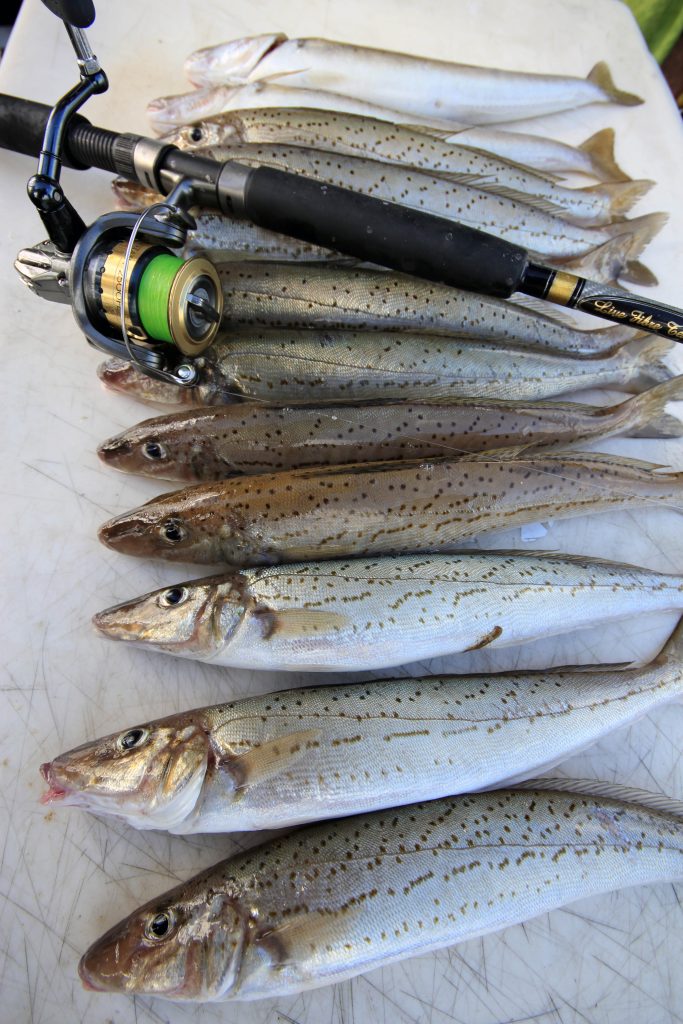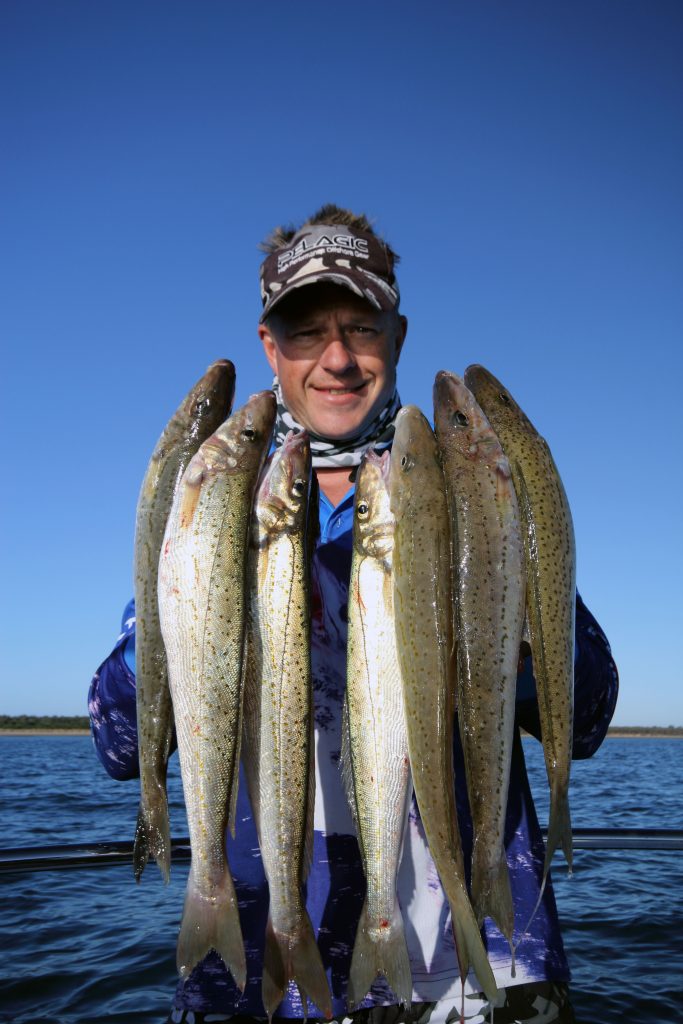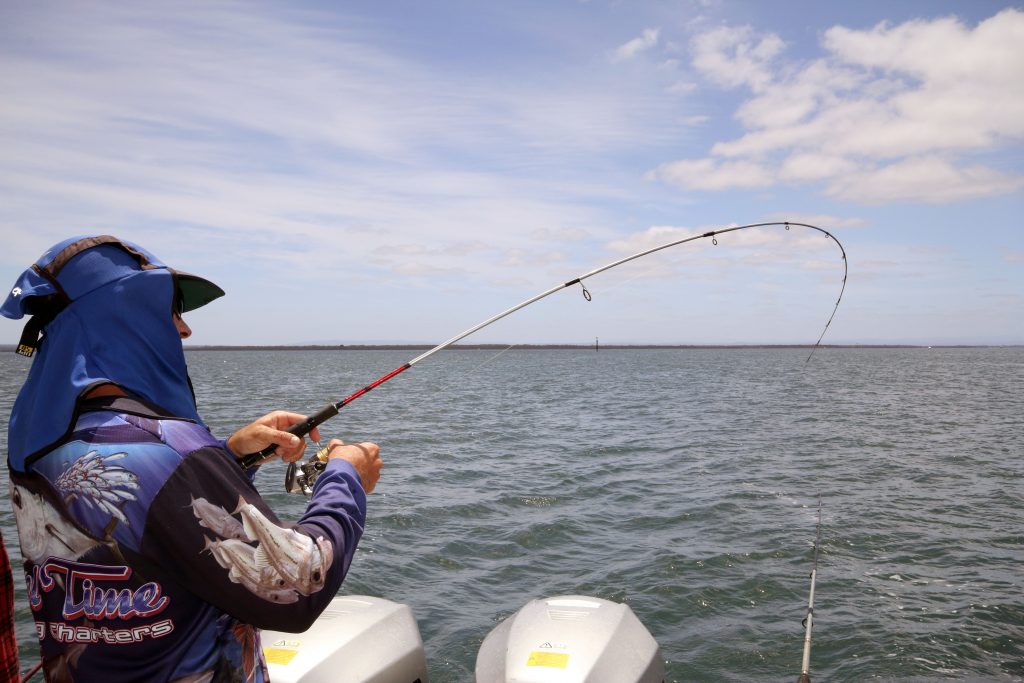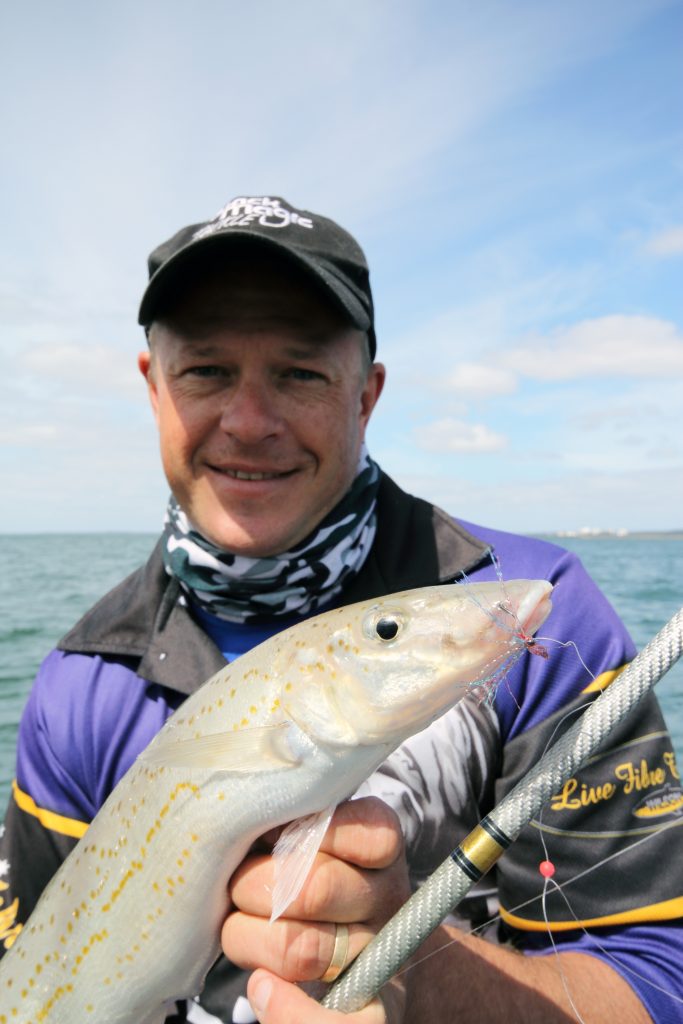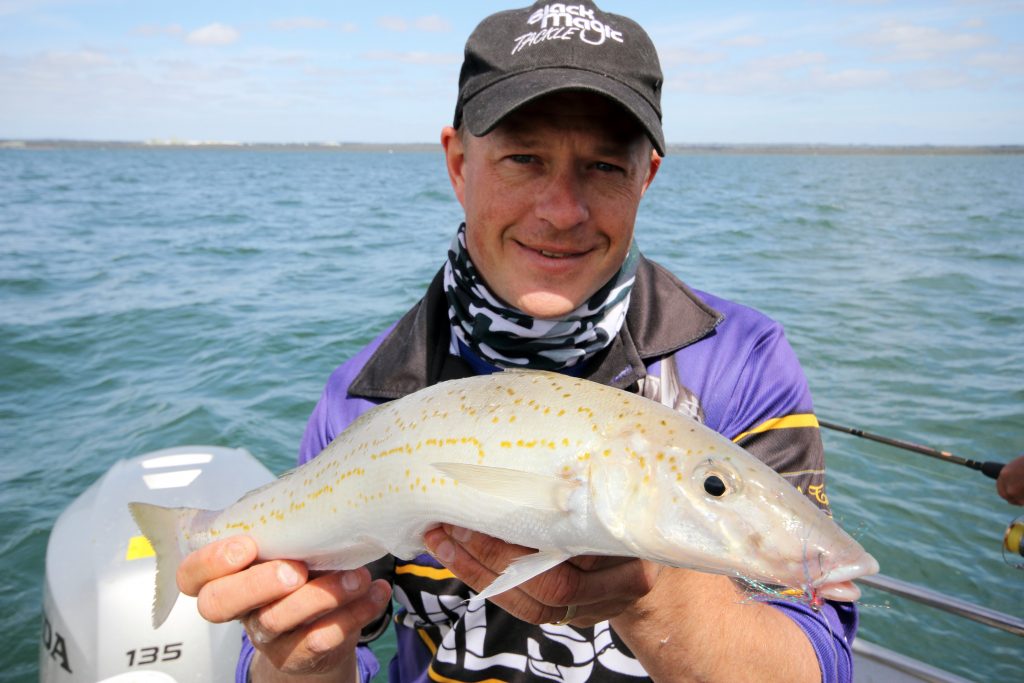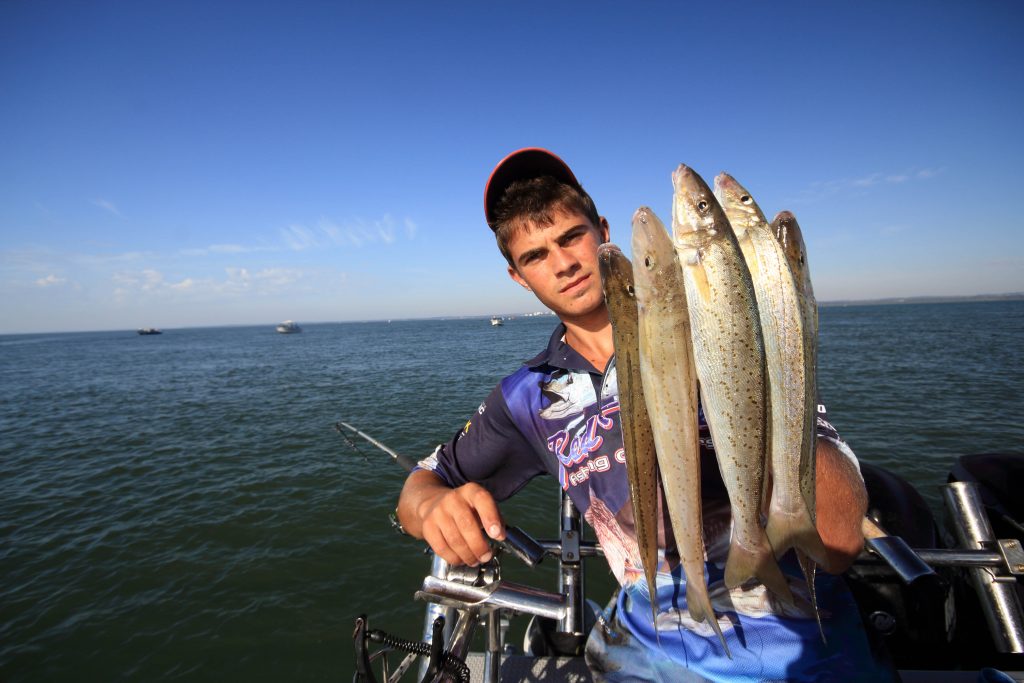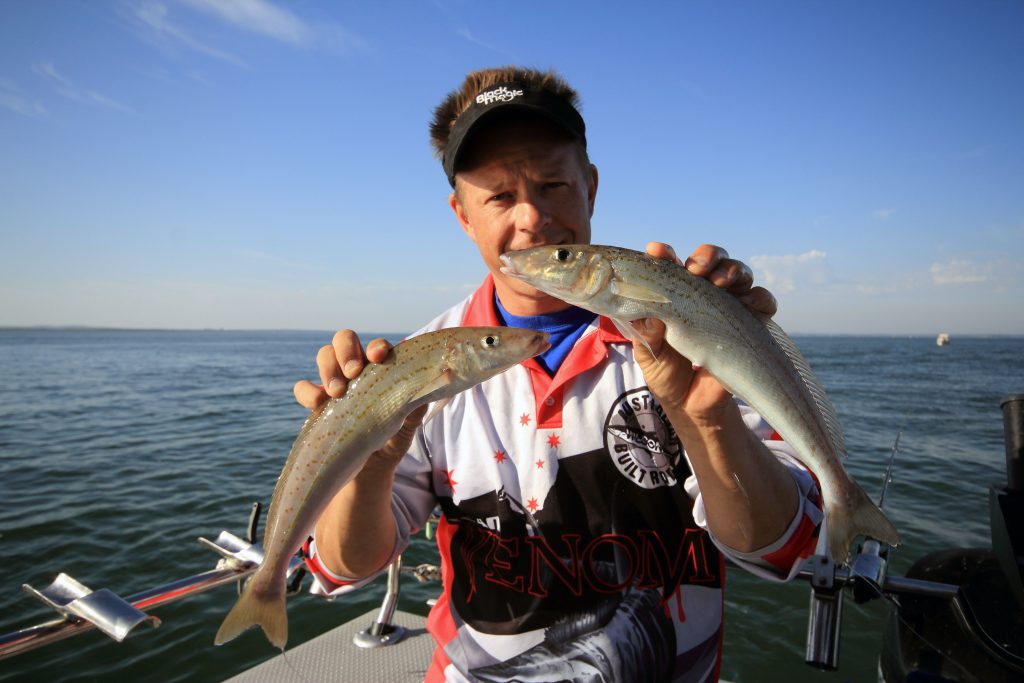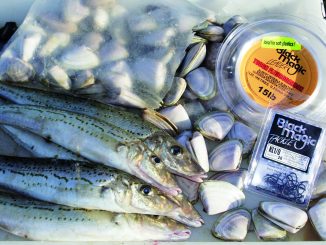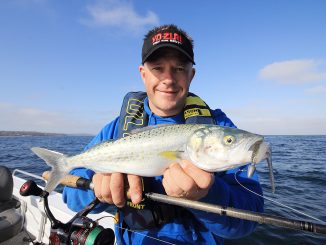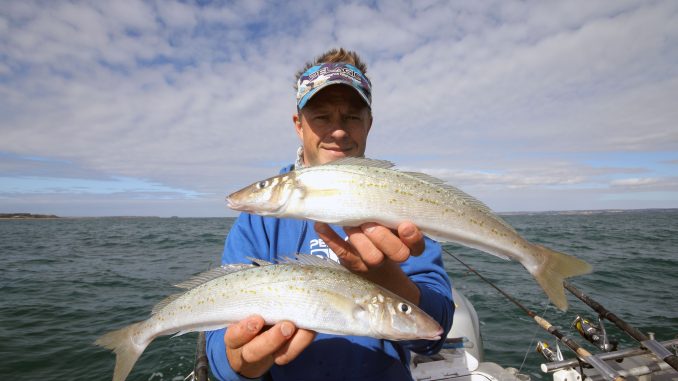
by Jarrod Day •
King George whiting tick all the boxes – they put up a fair battle on light tackle and on the table they’re an absolutely delicious treat. Caught right around the state, Western Port’s whiting are particularly popular due to their sheer population throughout the summer months and they’re still are a viable option year round.
Going by various nicknames, whiting are predominantly a summer time assailant. This tends to coincide with the end of snapper season, which allows anglers to switch species and target something else for the rest of the summer months. Despite their abundance, whiting can be a challenge to catch and have specific traits when being fought that can easily be overcome with a few simple techniques.
RIGS
There are a few different rigs that can be used on whiting and it’s the fish that will dictate which is to be used on the given day. Whiting are notorious for feeding differently and in different water depths – to be successful in catching them, you need to adapt too. In shallow water to 5m, they can bite quite timidly. It’s easy to mistake a leatherjacket bite for a whiting bite. A timid bite can also arise during days when the sun is out, making the fish more visible and vulnerable to predatory species.
In these situations, you need to be in tune with the bite and rig up to feel the bite the right way, so you can still get a solid hook-up. The ideal rig in these situations is the extended paternoster rig, which keeps the bait closer to the sea floor rather than suspended higher like a typical twin dropper paternoster rig. This rig tied from 8-10lb fluorocarbon will suit being fished over heavy weed or reef, with good abrasion resistance, and reduce the possibility of being busted off mid-fight. A sharp longshank hook is ideal.
Longshank hooks require the angler to set the hook by striking, which is the required technique for finicky fish. Try a hook that is offset and super sharp, almost acting as a circle hook on the initial bite. With a small and gentle strike, the hook can easily be set.
In deeper water situations where whiting are more aggressive, a twin dropper paternoster rig is more suited. This particular rig should be tied from at least 15lb fluorocarbon leader for its abrasion resistance, due to the fact that you’ll end up encountering other species in the mix such as pinkie snapper, leatherjacket, salmon, silver trevally and the odd small gummy shark. Paternoster rigs tend to be fished in fast current locations with heavy sinkers. In this instance, circle hooks in a size 4 or 6 are best suited.
BAITS AND BERLEY
Like all fish species, whiting can be quite fussy when it comes to what’s on the menu. Whiting are likely the fussiest of all the popular targeted species in the Port. With that in mind, take a selection of baits, so you’ll hopefully have what they want at the time of fishing. Of all the baits available, pipis, mussels and tenderised fresh strips of calamari are the top choices. Of course, there are other options such as sandworm and pilchard fillets, but these three selections are the best.
It’s important to have the right baits for the job and berley is equally important to attract them to your fishing location. Berley mixtures don’t have to be too complex – a stainless steel berley pot half filled with mashed pilchards is about as complex as it needs to be.
The berley needs to be weighted enough to be lowered to the seafloor and hold in the one location, otherwise the force of Western Port’s current can float an unweighted berley pot in the water columns, sending berley all over the place and not where you want it.
Using berley will send enough scent through the water that fish will be attracted quickly. Some anglers don’t like to berley because it attracts other species such as silver trevally, salmon, blue warehou, leatherjacket and others. Instead of using berley, some anglers make many moves to find a school of whiting. As successful as this is, it’s a lot of work if you’re manually anchoring.
If you move around a lot, every ten or so minutes it pays to up anchor drive or drift some 20m and try again, until a school is located. As effective as this method is, it’s best suited to fishing in shallow water locations where whiting tend to school up. In the deep, whiting only come together in numbers when berley is used.
LOCATIONS
The Port has countless locations to target whiting, some of which are more popular than others, due to the abundance of fish caught each year. Other places might not be known for number but certainly size. Finding the right whiting ground is paramount to success – whiting are widespread, so with a little berley and patience, you should be able to catch them.
Typical shallow water locations include the Gentle Annie, Charing Cross and Cockyanes channels along with the Quail and Tyabb banks. The Middle Spit, Eastern Channel, Chilcott Channel and Tankerton areas are also great producers in season.
Further south, Tortoise Head, Coronet Bay, Dickies Bay, Cleeland Bight, Somers and Balnarring are just as productive. In all these locations it’s a good idea to stick to the extended paternoster rig, as you’ll mostly be fishing in 4-6m, where fish can be finicky.
Other locations such as the North Arm, Long Reef, Ventnor, Cat Bay and Flinders are deep water locations where a twin dropper paternoster rig is more effective and fish tend to be more aggressive.
TACTICS
When fishing for whiting, it’s vital that you have the drag set on your reel. Whiting aren’t known for busting you off, but they are known for pulling hooks, especially on their last boat-side run and just when you think you’ve won the battle. This is due to their ability to change direction during the fight rather quickly, which undoubtedly buckles the rod and pulls line from the reel.
If the drag isn’t set accordingly, the hook can tear out of their soft lip. The same can be said for allowing any slack in the line while fighting. Dipping the rod’s tip will allow the line to become slack, even for a split second. Just one inch of slack line can have the hooks slip out of the mouth, even a circle, so keep the line tight at all times.
So that’s how easy it can be to tempt a few whiting. The only thing left to do is to get out end enjoy some summer fun.

